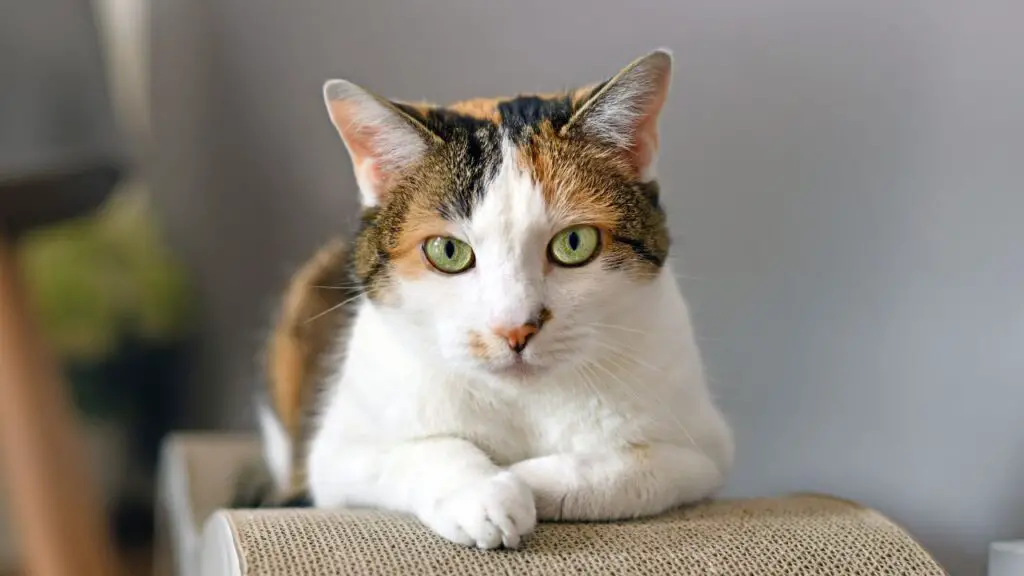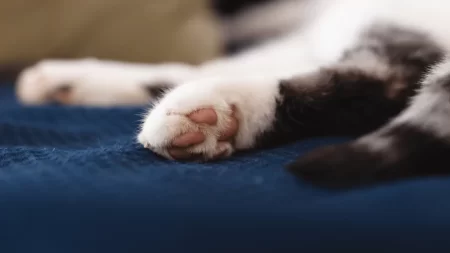Calico cats reproduce the same way as other cats, but their coat color is determined by a complex genetic process that involves the X chromosome.
Calico cats have a tri-color coat with patches of white, orange, and black, or sometimes cream and grey.
Calico cats are almost always female because males usually have only one X chromosome and one color.
Male calico cats are very rare and usually sterile, and they can occur due to genetic abnormalities such as Klinefelter syndrome (XXY chromosomes) or chimerism (two different cell types).
Are calico cats more likely to be female?
Yes, Calico cats are much more likely to be female due to the genetic basis of their coat color.
The X chromosome is responsible for carrying the gene for black or orange colors in their coat.
Since female cats possess two X chromosomes, they can have both black and orange colors in their coat, along with white.
On the other hand, male cats only have one X chromosome and one Y chromosome, resulting in only one color in their coat.
The occurrence of male calico cats is very rare, and this is because of genetic abnormalities.
These abnormalities result in male cats having two X chromosomes and one Y chromosome (XXY) or two different cell types in their body.
According to some sources, male calico cats account for only 0.03% of all calico cats.
What determines the color pattern of a calico cat?
The color pattern of a calico cat is determined by a complex genetic process that involves the X chromosome, which carries the gene for the black or orange color.
Female cats have two X chromosomes, so they can have both black and orange colors in their coat, along with white.
However, one of the X chromosomes is randomly inactivated in each cell during development, resulting in patches of different colors.
Do calico cats have a higher rate of reproductive issues?
Calico cats do not have a higher rate of reproductive issues than other cats, except for the rare male calico cats.
Male calico cats, due to an additional X chromosome (XXY), experience sterility and increased vulnerability to various health problems.
These include cognitive issues, behavioral problems, reduced bone strength, and higher body-fat content.
Consequently, their overall well-being and lifespan are negatively impacted.
In contrast, female calico cats exhibit similar health levels to cats with different coat patterns, typically living between 12 and 16 years.
How many offspring can a calico cat have in one litter?
Calico cats are not breed-specific, so they range dramatically in weight and size. Some breeds may have larger or smaller litters than others.
The average litter size for domestic cats is about four kittens, but it can vary from one to twelve.
Calico cats are not more or less likely to have larger or smaller litter than other cats with different coat patterns.
How do calico cats choose their mating partners?
Calico cats choose their mating partners the same way as other cats, based on factors such as availability, compatibility, and hormones.
Calico cats are not a breed of cat but a color pattern that can occur in many breeds.
Therefore, they do not have any specific mating behavior or preference that is different from other cats.
Are calico cats more or less likely to mate with other calicos?
Calico cats are not more or less likely to mate with other calicos than with other cats.
Calico cats are not a breed of cat but a color pattern that can occur in many breeds.
Therefore, they do not have any specific mating behavior or preference that is related to their coat color.







